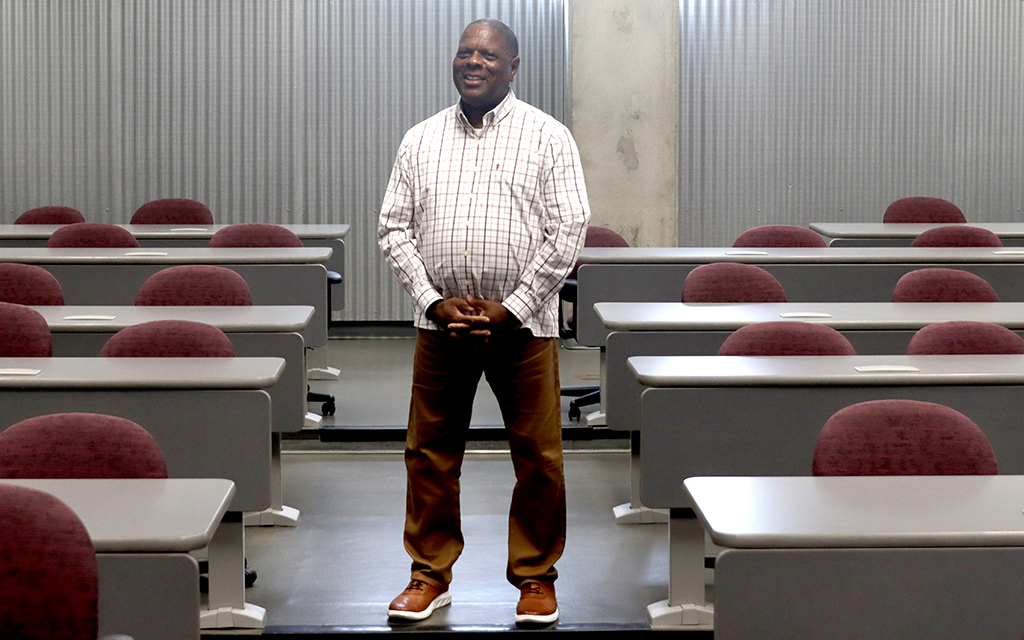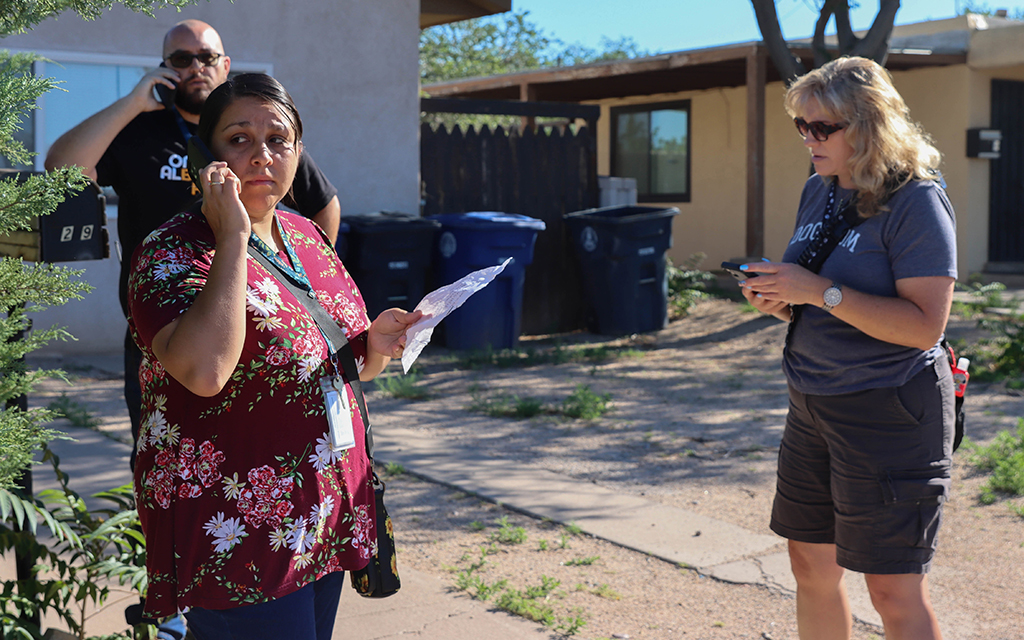MADISON, Wisc. – Common demands for police reform include chipping away at long-established police protections: make complaints against officers open to the public, tighten and enforce use-of-force rules, and reform the disciplinary process.
Yet, in cities and towns across the country, those demands have met fierce resistance from police unions, which sometimes use their power and political influence to thwart efforts their members oppose.
“Many police unions put themselves forward as kind of like the base of opposition for a lot of police reform efforts,” said Jorge X. Camacho, the policy director of the Justice Collaboratory, a research center at Yale Law School. “Not all the time, not always, not for every effort, but much of the time.”
One criminal justice expert put it more bluntly: “Police unions have become public enemy number one for commentators concerned about race and police violence,” Colorado professor Benjamin Levin wrote in an essay for the Columbia Law Review.
RELATED STORY

Why police unions keep negotiations secret
Joe Clure, the executive director of the Arizona Police Association, who has worked with unions throughout Arizona, said police unions and most officer don’t have a problem being held accountable. But a balance must be struck with the union’s role of protecting officers.
“You look around across the country, politicians, particularly on the left, have villainized police officers,” said Clure, whose association represents more than 50 law enforcement agencies in the state. “They demonized police officers.”
Like other public-sector unions, police unions exist to protect and advocate for their members. What differentiates police unions from other public-sector unions is the influence they’ve cultivated over time.
Law enforcement has a unionization rate of more than 60% – second only to firefighters, according to an article from the Cicero Institute, a Texas think tank. In comparison, the union membership rate for public-sector workers nationally was about 34%, according to 2021 union member data from the Bureau of Labor Statistics.
With so many members, many police unions have built strong positions in communities: They can negotiate protections into their contracts. They can use their money and influence to lobby legislators and support political candidates. And they can hire attorneys to fight policies – and people – they don’t like.
However, police unions do not have “real power,” Camacho said. They can’t strike or prevent a police department from doing what it wants.
Public perception may differ. Gallup has asked U.S. residents about a variety of police reform efforts for several years. In May, the public opinion survey showed 44% of the 12,000 U.S. adult respondents thought police unions should be eliminated. However, that’s a decrease from the two previous surveys.
As the public pressure mounts to reform policing in America, examples have cropped up across the country that indicate the power dynamic with some police unions has shifted – whether by choice or force. Some union leaders have taken up reins to try to lead change, and others have made concessions after facing public backlash. And some unions are fighting to maintain their power as outside groups try to strip them of their control.
Kevin Robinson, a former assistant chief with the Phoenix Police Department, said unions can have a tremendous impact on reform efforts.
“How they do that is by telegraphing to their membership that misbehavior of any sort – any kind of nonprofessional behavior – will not be tolerated,” said Robinson, who teaches criminology at Arizona State University and is seeking a seat on the Phoenix City Council, “not by the citizens of the community they represent, not by the police department and certainly not by the police union.”
Union influence grows over decades
The Police Benevolent Association of the City of New York boasts that with its 24,000 sworn members, it’s the largest municipal police union in the world. In 2020, the nonprofit brought in nearly $30 million in revenue, according to Guidestar, which tracks nonprofits.
The New York police union flexes its power in numerous ways, but it didn’t always have that kind of strength.
The association began as the Patrolmen’s Benevolent Association in 1894 to provide benefits for widows of officers killed in the line of duty. At that time, many police unions and associations started as a way to protect and represent officers’ interests publicly while also working with elected officials over officer contracts.
Those early unions did not have the right to collectively bargain for wages. And after a violent police strike in Boston in 1919 that caught the ire of President Woodrow Wilson, police unions lost the right to strike.
RELATED STORY

Police reform in U.S. is piecemeal, not comprehensive
Samuel Walker, retired emeritus professor of criminal justice at the University of Nebraska-Omaha, has been researching and writing on police unionization for nearly five decades. He said unions started gaining power in the 1960s as police faced turmoil in their communities.
“Because of the urban riots and everything, rank and file officers got mad,” Walker said. “They also got mad at their chiefs about how they were being treated. They’re really pretty hair-raising stories about that.”
Unions and associations began gaining the right to collectively bargain in the 1960s and ’70s, giving them more leverage.
Seth Stoughton, a law professor from the University of South Carolina and former police officer, said unions have the right to collectively bargain over anything they believe materially affects the workplace – from office desks to body cameras worn in the field.
Stoughton said union influence has grown so much that it doesn’t just affect decisions during contract negotiations with the city, unions can lean on members to get behind issues or stall actions they don’t support.
That influence also stretches to the people making the decisions.
Police unions and associations have spent more than $48 million to lobby at the state level and gave nearly $71 million to state-level candidates and committees in the past decade, according to OpenSecrets. Democrats and Republicans alike have received generous political donations.
Union leaders who focus on reform
In late June, the large white board in Jim Palmer’s Madison office listed the police shootings in Wisconsin and ongoing public safety cases in court. Also on the board: A short list of groups that disaffiliated from the Wisconsin Professional Police Association, which Palmer leads.
The 90-year-old union, which represents more than 11,000 members, has sought out public opinion and advocated for policies that improve policing standards. A decade ago, Palmer launched an annual community survey to gauge which policing policies the public supports and persuade officers to get on board with them.
Palmer, an outspoken supporter of police reforms, also has lobbied for legislation and proposed a “blueprint for change,” which called for such things as funding for crisis intervention programs and largely banning chokeholds. In a 2020 editorial, he implored police to act.
“If we fail to seize the opportunity to improve the world around us, we should not be surprised when the public reaction to the next controversial police incident is louder and more severe, and when the calls for reform become more radical,” he wrote.
Palmer doesn’t fit the mold of a typical union leader. But there are examples of other unions taking the lead in police reform.
For example, the AFL-CIO, which has 13 law enforcement affiliates, in 2021 released a blueprint for public safety reform. The initiative, which one supporter called a “huge step,” asks members of non-police unions to hold police members accountable if they violate their professional oath or abuse their power, and ultimately to help local unions remove wrongdoers from their membership.
